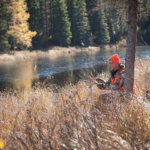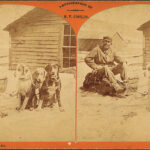Camp robber, meat bird. Lumberjack, venison hawk, moose bird. “All are expressive of its character and behavior,” writes Arthur Cleveland Bent in his 1946 Life Histories of North American Jays, Crows, and Titmice.
“It” is the Canada jay, once known as the gray jay.
“This bird…greets the camper with demonstrations of welcome and shares his meals,” Bent writes. The jay’s presence is nearly ubiquitous in boreal spruce-fir forests, where it snatches every morsel of food it finds and wings off to hide its treasure. Canada jays, wrote William Brewster in 1937, “place a mouthful of oatmeal on the branch of a hemlock, three or four crumbs of bread in a dead stub, or a large piece of bread on the twigs of a fir.” That hoarding, however, may be the species’ downfall.
Perisoreus canadensis was known as the Canada jay until 1957—when the American Ornithologists’ Union changed its common name to gray jay. Then in 2018 the gray jay once again became the Canada jay, thanks to the efforts of researchers at Ontario’s Algonquin Provincial Park and elsewhere, who argued that the jay is a quintessentially Canadian bird. The Canada jay’s range spans northern North America, from Alaska east to Newfoundland and Labrador, and south to the northern reaches of the continental U.S. in regions such as the Upper Midwest, New York’s Adirondack Mountains, and New England.
Ornithologists like Ryan Norris of the University of Guelph have been working to get the jay recognized as Canada’s national bird, an effort that, despite backing in naturalist circles, hasn’t quite taken off. If it doesn’t happen soon, jay-watchers say, it may be too late. Canada’s, especially Ontario’s, climate is warming, putting the jays—and their carefully stashed food resources—at risk.
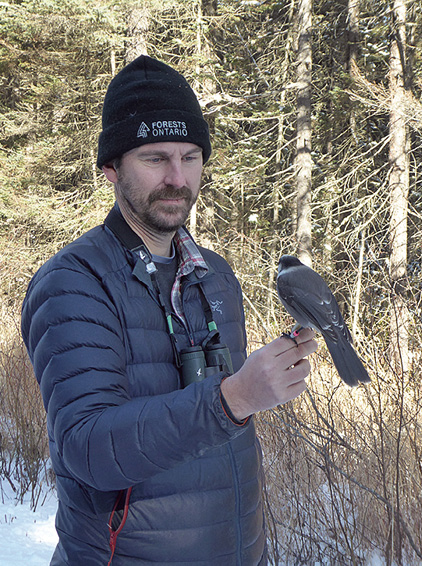
Freezer on the Fritz
Ontario may be one of the best places on Earth to study the effects of climate change, say scientists like Norris. Compared to the rest of the world, southern Ontario is warming twice as rapidly, and northern Ontario three times as fast, according to Francois Brissette and Annie Poulin of the Hydrology Climate Change Laboratory (HC3) at the École de technologie supérieure de Montréal. In years to come, that heating up, Brissette and Poulin say, will not be evenly distributed across the seasons. Winters will warm significantly more than summers. Future winters will be 4.5-8 degrees C warmer, with much less snow.
“Model projections indicate that these changes will continue, highlighting that the risks currently
presented by climate change will become even greater,” states the document Canada in a Changing Climate.
“November seems more like October and April like May,” observes Drew Monkman in Nature’s Year: Changing Seasons in Central and Eastern Ontario. “One can’t help but wonder how much longer we’ll be able to depend on the seasonal rituals we’ve kept for so long.”
Canada jays would agree. Already, they’re chasing winter. Changing autumn freeze-thaw cycles threaten the survival of these iconic birds in southern Ontario, recent research reveals. Led by Norris, the study links food spoilage caused by more frequent freeze-thaw events with the birds’ population decline in parts of the province.
New climate-driven freeze-thaw patterns—the equivalent of unplugging and plugging in a freezer—are spoiling the birds’ cached food supplies. That leaves less food for overwintering, leading to production of fewer young and young in poorer condition. These “carry-over effects” are driving population declines along the southern edge of the jays’ Canadian boreal forest range, including in Algonquin Provincial Park, says Norris.
The results were published in Global Change Biology. Co-authors include Dan Strickland, a former chief naturalist at Algonquin Park who began keeping track of Canada jays more than a half-century ago.
Unlike squirrels, which cache non-perishable nuts ahead of winter, Canada jays hide meat, berries and other perishable items in trees. The jays are unique in that they use the environment as a freezer, Norris says. That works, however, only as long as the freezer stays plugged in.
The scientists found that Canada jays’ food stores are degraded by alternating warm and cold temperatures. Without a full ‘frig for Canada jay parents to access, the young often weigh little for their body size, and are less likely to survive to breeding age.
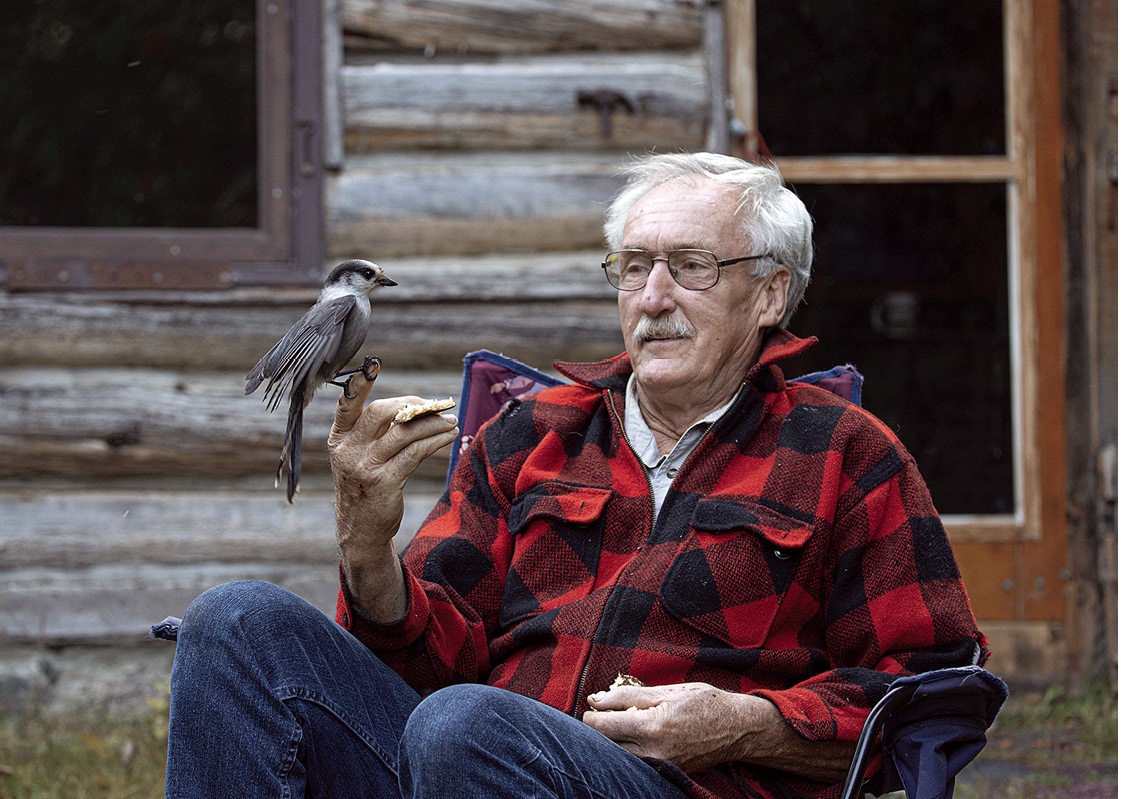
The researchers’ previous work demonstrates that repeated freeze-thaw cycles influence reproductive success, but the scientists weren’t sure whether these cycles are also responsible for population declines. The biologists say this is the first study to show that events in one part of a jay’s lifetime can influence success in another period, affecting the future of a population.
The researchers monitored Canada jay nesting pairs and broods in Algonquin Park, and used environmental data recorded there since 1977. They found that Canada jay numbers in Algonquin have nose-dived over the past four decades. Fewer than half the Canada jay territories identified in the 1970s are occupied today. “If we continue to see this warming trend, no doubt we will not see Canada jays at this location in the future,” says Norris. “Canada jays’ southern range limit will be shrinking, if it’s not already.”
The Right Kind of Freezer
An earlier study by Norris and colleagues shows that for Canada jays to survive and reproduce in Canada’s harsh winters, they need to store food in the right tree species.
The study appears in Oecologia. Unlike most birds, which migrate south for the winter, Canada jays are year-round residents in the boreal forest. In cold months, they rely on berries, fungi, insects, carcass meat, and other foods they cache in nooks and crannies of trees during summer and fall. They remember where they’ve stored tens of thousands of food items scattered in a territory up to 160 hectares in size.
“What is perhaps more remarkable is that female Canada jays start breeding in mid-February when temperatures are often below minus 15 degrees Celsius and there is very little food to be found, so these caches are crucial not only for overwintering survival but also for successful reproduction,” Norris says.
Algonquin Park records show that Canada jay numbers have fallen more quickly in territories dominated by deciduous trees, such as sugar maples, than in areas of mostly coniferous trees, especially black spruces.
The researchers thought that certain tree bark characteristics might influence the quality of food storage sites. The bark and foliage of boreal and subalpine tree species, for example, have antibacterial and antifungal properties that may help preserve food. To test this idea, the scientists simulated Canada jay caches by attaching small food containers to various trees in the fall. Weighing the food after one to four months, they found that more remained on the spruce and pine trees than on the deciduous trees.
“The evidence suggests that the resin production of boreal conifers may be important for the survival of Canada jays,” Norris says. “That fits perfectly with our observation that Canada jay territories that are no longer occupied in Algonquin Park are in areas dominated by deciduous forests.
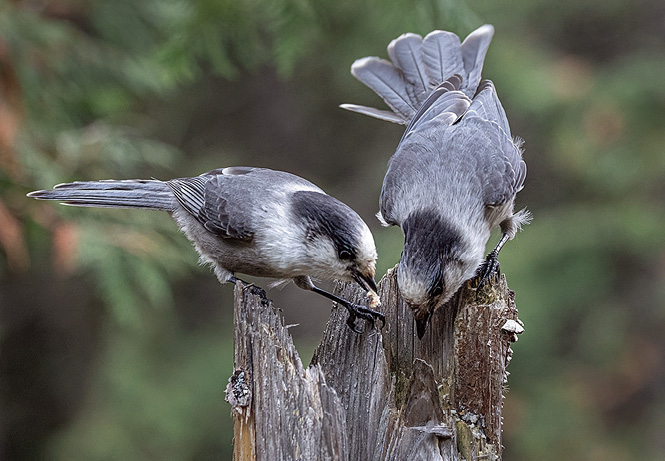
“If other northern-breeding or alpine-breeding species rely on cached food, then their ranges may also be limited by the ability of certain habitat types to preserve food over the winter season.”
What’s in the Freezer?
Canada jays’ freezer content—specifically how much there is—may be as important as what kind of freezer the birds choose, and when they fill their larders.
Research by Norris, Nikole Freeman, and others at the University of Guelph estimated what was stored in Canada jays’ caches. Human-derived food, vertebrates, invertebrates, and plants were found in stable-carbon and -nitrogen isotopes in feathers from 200 nestlings. The results, published in the Journal of Avian Biology, suggest that the quantity of food available to a nestling during its development may be more important than the composition of its diet. As long as the freezer is full, to a Canada jay, it may not matter what’s in it.
That said, Norris and his colleagues noted that warmer and more variable temperatures in fall were linked with a higher amount of vertebrate and human-derived food in jays’ “cold storage.” Vertebrate meals included bits of carcasses scavenged from road kill and wolf kills; human food consisted of everything from raisins to bread to hot dogs. Regardless of food type, however, “nestling diet in March and April was influenced by environmental conditions five to six months prior to hatching,” wrote the scientists.
Indeed, for Canada jays, it all begins in autumn. Once the birds locate meals, they must make sure their cache sites are adequate for food storage, that the caches are in the right tree species for preservation, and that the meals salted away will be enough to sustain them through the winter—and feed spring’s hungry new mouths.
Canada jays show “how complex the reaction to a changing environment can be,” Norris says. “There are not many examples that link climate to population decline in a way that we can clearly understand what’s happening. I can’t think of a better species than the Canada jay to represent how climate change is influencing our wild populations and ecosystems.”



